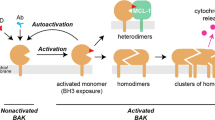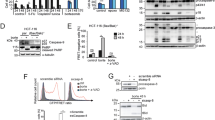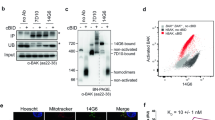Abstract
Jurkat cells express Fas, and rapidly undergo apoptosis in response to Fas ligand or an agonistic anti-Fas antibody. This apoptotic pathway is mediated by a cascade of caspases. In this report, we show that Fas activation induced the processing of caspase 8 in Jurkat cells with a time frame similar to the activation of caspase 3 and the proteolysis of nuclear proteins. Jurkat cell transformants that overexpress Bcl-2 were partially but not completely resistant to the Fas-induced apoptosis. Little processing of caspase 8 was observed upon Fas activation in these transformants. Furthermore, although caspase 8 was recruited to Fas upon Fas activation in the parental Jurkat cells, the recruitment of caspase 8 to Fas was inhibited in the transformants overexpressing Bcl-2. These results suggest that Bcl-2 inhibits Fas-induced apoptosis by preventing the formation of the death-inducing signaling complex that is composed of Fas, FADD/MORT1, and caspase 8.
This is a preview of subscription content, access via your institution
Access options
Subscribe to this journal
Receive 50 print issues and online access
$259.00 per year
only $5.18 per issue
Buy this article
- Purchase on Springer Link
- Instant access to full article PDF
Prices may be subject to local taxes which are calculated during checkout
Similar content being viewed by others
Author information
Authors and Affiliations
Rights and permissions
About this article
Cite this article
Kawahara, A., Kobayashi, T. & Nagata, S. Inhibition of Fas-induced apoptosis by Bcl-2. Oncogene 17, 2549–2554 (1998). https://doi.org/10.1038/sj.onc.1202192
Received:
Revised:
Accepted:
Published:
Issue Date:
DOI: https://doi.org/10.1038/sj.onc.1202192
Keywords
This article is cited by
-
Effects of short-term exposure of paracetamol in the gonads of blue mussels Mytilus edulis
Environmental Science and Pollution Research (2020)
-
Cryptotanshinone induces ER stress-mediated apoptosis in HepG2 and MCF7 cells
Apoptosis (2012)
-
Characterization of chronic HCV infection-induced apoptosis
Comparative Hepatology (2011)
-
Age-associated alteration of γδ T-cell repertoire and different profiles of activation-induced death of Vδ1 and Vδ2 T cells
International Journal of Hematology (2011)
-
Downregulation of Bcl-2 sensitises interferon-resistant renal cancer cells to Fas
British Journal of Cancer (2004)



